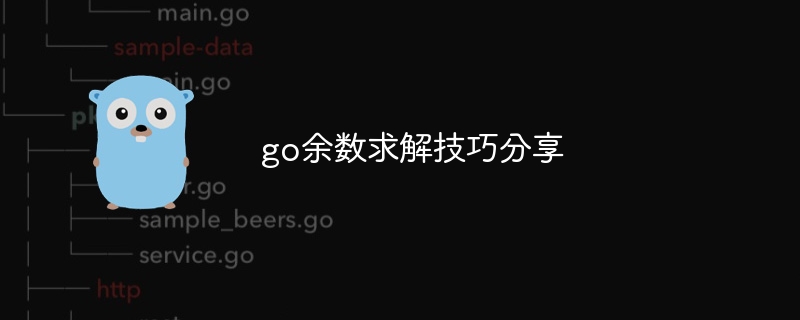
To find the remainder in the Go language, you can use the % operator, or use the Mod function of the math/big package to find the remainder with arbitrary precision. For a negative dividend, use the absolute value function to obtain a positive remainder. Practical applications include the calculation of remaining funds after players purchase items in games.

Tips for finding remainders in Go
In Go language, the remainder operator is % . It returns the remainder of the division of two integers.
General methods for finding remainders
The simplest way to find remainders is to use the % operator. For example:
package main
import "fmt"
func main() {
dividend := 10
divisor := 3
remainder := dividend % divisor
fmt.Println(remainder) // 输出: 1
}Use the modulo function
math/big The package provides the Mod function, which can calculate any Remainder of precision. This is useful for handling integers larger than the int64 range.
package main
import (
"fmt"
"math/big"
)
func main() {
a := new(big.Int).SetInt64(1000000000000000000)
b := new(big.Int).SetInt64(3)
remainder := new(big.Int)
remainder.Mod(a, b)
fmt.Println(remainder) // 输出: 1
}Finding the remainder of a negative number
If the dividend is negative, the remainder is also negative. To get a positive remainder, you need to use the absolute value function:
package main
import (
"fmt"
"math"
)
func main() {
dividend := -10
divisor := 3
remainder := math.Abs(float64(dividend % divisor))
fmt.Println(remainder) // 输出: 1
}Practical Case
Suppose you are developing a game where players can purchase items from the store. Each item has a specific price, and players also have limited funds. You need to find the remaining funds after the player purchases an item.
package main
import "fmt"
func main() {
playerFunds := 100
itemPrice := 50
remainder := playerFunds % itemPrice
fmt.Println("剩余资金:", remainder) // 输出: 50
}By following the techniques presented in this article, you can efficiently solve remainders in Go.
The above is the detailed content of Go remainder solving skills sharing. For more information, please follow other related articles on the PHP Chinese website!




